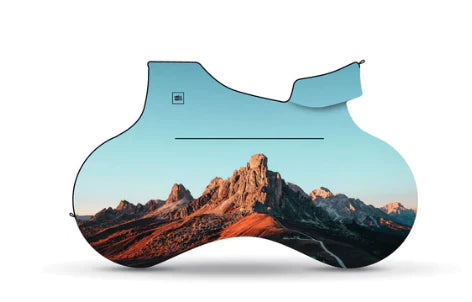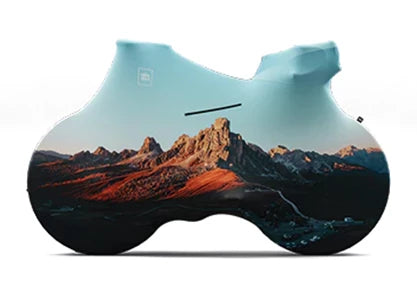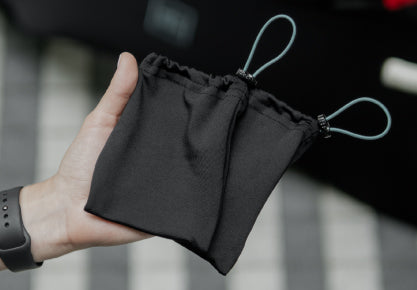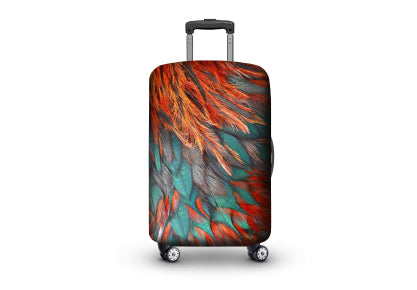Cycling during a virus outbreak: the whys and the hows

But wait, does this mean you really can’t go out at all to do what you really enjoy— cycling?
Short answer: No.
Long answer: Even though we should scale back on all the fun things that we normally like to do outdoors, there are many reasons why you should go out on your bicycle even during a virus outbreak.
For one, your bike needs you—if you don’t use it, you lose it (to rust and age). For another one, you need physical movement to stay healthy, especially if you want to fight off infections.
We at Velosock know what you’re thinking, though:
Is cycling safe?
Can I ride my bike with sickness-inducing viruses floating around in the air?
Well, we’re glad you asked, because our answer is YES to both questions! Keep on reading, and find out everything you need to know for you to cycle safely during a virus outbreak, keep your bike in top shape, and most importantly stay healthy.
Why cycle during a virus outbreak
Being aficionados of cycling ourselves, we want to tell you that this is one of the best times to take your bike out. There are three main reasons why this is the case:
- Using your bike often enough means it stay in good condition
- Because infections keep people home, there are fewer of them on the road
- Cycling has an incredible number of health benefits
Let's look at these reasons in more detail.
#1 Use your bike to keep in good condition
Ask yourself this:
How often do I see people taking care of something that is left standing? The truth is that it rarely happens. That’s because what’s left standing is often forgotten and neglected, and time simply loves to ravage a precious investment like your bicycle.
By not riding your bicycle, you’re not taking care of it or exercising/flexing its parts. This means that its frame, chain, sprockets, and cables will rust, its brake pads will lose elasticity and harden, and its tires are likely to crack.
#2 Ride your bike when there are fewer people on the road
The second reason why riding a bike during a virus outbreak has to do with safety.
Both cars and people pose a risk to cyclists. Case in point: of all traffic fatalities in Europe from the years of 2007 to 2016 (about 2000), cyclist deaths accounted for 6-8% of them.
If a quarantine is warranted, and the issuance of recommendations on social distancing is put out to the public, many people will choose to stay at home instead of on the road, making this a safer time than ever to go out cycling.

(Courtesy of Tobias Cornille)
#3 Cycle to stay healthy
The final reason to get out to cycle has to do with your health. We already know that sitting at home too much is bad. But besides negating this altogether by cycling, there are many added benefits of taking your bicycle out:
- Stronger bones
- Better heart health
- Enhanced circulation
- Lower fat levels
- Lower levels of anxiety/depression
Of course, there are other benefits, too, but the one we’d like to highlight here the most is that cycling promotes a strong immune system. According to a study, it keeps your immune system young and functioning, which means you’re less likely to catch an infectious virus while cycling. Bet you didn’t know that!
Cycling tips for safe cycling during virus outbreaks
Now that we’ve covered the reasons for riding, let’s talk about preparation and give an answer to the question of “How can I ride my bike during a virus outbreak safely?”
Here's the answer:
First, avoid touching your hands, mouth, and nose, and wash your hands frequently if you can.
Secondly, when cycling, it’s important to maintain a distance of a bare minimum of one meter (about three feet). But you should ideally keep at least two or three meters (about six to ten feet) of distance because of your increased movement speed.
And finally, it’s not only good practice but also generally encouraged that you wear a mask when cycling, since it can stop water droplets in the wind that potentially carry the virus from entering your body through the mouth or nose.
If you do these simple recommended things, you’ll be adequately prepared and you can rest assured that you won’t catch anything.
Bike maintenance tips: why DIY, and how?
In the same way that you need to be prepared for a virus outbreak, your bike does, too.
During a virus outbreak, you want to do as much maintenance as possible for your bike yourself to keep in line with social distancing recommendations. Before we get to what maintenance you should do, consider these tips as reasons for why you should do it yourself and at home:
- Bringing the bike to a shop exposes you to other people
- Viruses love hard and shiny surfaces, like your bike’s
Let's take a closer look at these reasons.
Bringing the bike to a shop exposes you to other people

(Courtesy of Christin Hume)
The first reason is obvious:
Bringing your bicycle to a shop requires you to leave your house and travel to a shop, potentially increasing your chance of infection. This is especially the case depending on how busy the shop you decide to visit is because such a place and its tools are more likely to harbor the virus of an outbreak.
Viruses love hard and shiny surfaces, like your bike’s
The second reason why you should keep your bike at home and do all the maintenance yourself is that most bikes are made from painted metal, thus putting the bike in the hard surfaces category.
What this means is that if your bicycle comes into contact with such a virus, the virus could be viable for anywhere from 24 hours to several weeks on the bike’s surfaces depending on the type.
DIY bike maintenance tips, the basics
Lastly, here is actually what you need to do when it comes to at-home bike maintenance:
#1 Wipe and sanitize your frame. This is especially crucial to do during a virus outbreak because, as we mentioned, some viruses can live on your bike’s surface for several weeks. Also, as you ride your bike around it’s likely to gather dust, dirt, and other debris. If they sit long enough, they may cause corrosion damage.
#2 Clean the chain with a mild degreaser and re-lubricate it.
#3 Make sure tires are good. Tires with low air pressure are more susceptible to punctures and are less likely to protect the rim. Also check that they have no cracks.
#4 Check your bolts, nuts, and cables, and tighten any of them if they’re loose (except those on the cassette).
#5 Check your brakes and their seating. If they’re not seated well, they lose braking ability and wear unevenly. If they have little life left, replace them for better performance. Also ensure that they’re not dirty, and see that the cable pulls on them properly.
#6 Index your gears. You don’t want choppy or unsmooth gear switching because it puts a strain on the parts, and it adds friction.
#7 Don’t use WD40 (water-displacing spray) except as a cleaner—its main use is as a solvent (it doesn’t possess the properties of a proper lubricant) and as a water displacer.
That’s it—that’s really all there is to our bike maintenance tips. Follow these steps, and your bike is sure to serve for a long time.
Bike storage tips for when an outbreak is in progress

(Courtesy of Erik Odiin)
You may not believe it, but storing your bike properly after that awesome cycling session is actually very important, especially during a virus outbreak.
What’s even more important than simply storing it is where you store it. Our tip to you? At home. Besides being exposed to the elements, the main reason is this:
By being kept outside, your bike is going to be contaminated with bacteria and viruses, some of which can survive on hard surfaces (like your bike’s) for as long as 72 hours. It can even be longer for other types (several weeks).
But we know what you’re thinking: How do I store it inside without getting it dirty?
We have a tip for that, too: before bringing it indoors, make sure your bike is clean and then put on a Velosock bike cover.
Velosock covers are designed to be double barriers that not only protect your bike from the outside but also protect your indoors by snuggly containing the bike and its wheels. And by using such a cover, you can rest assured that neither lubricant from the chains nor no dirt from the wheels ever makes it onto your floors.
Added bonus: if you have wooden floors, the wheels will never touch them to leave a mark.

Happy cycling all year round!





























Leave a comment